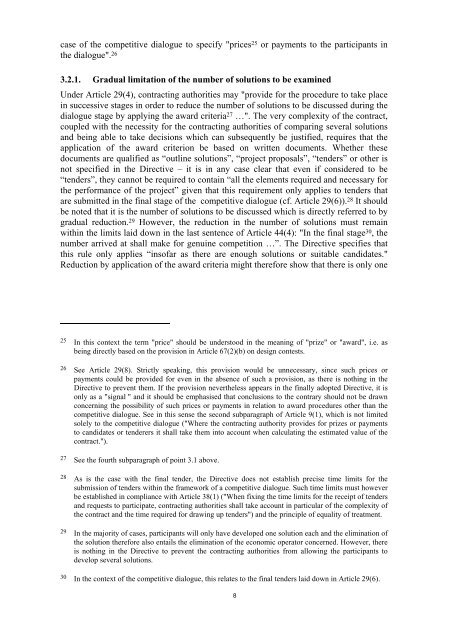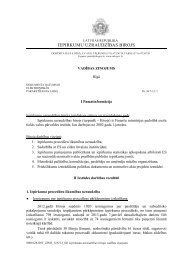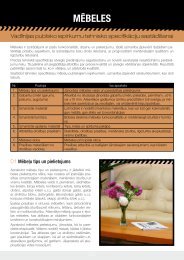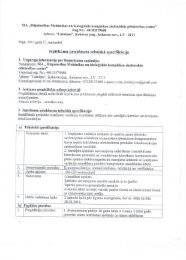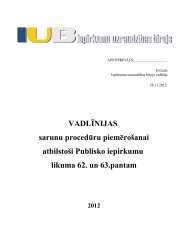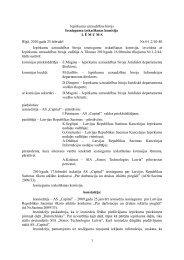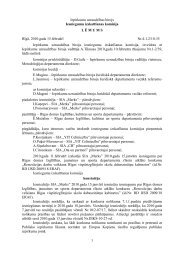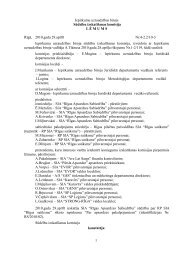Explanatory Note - Competitive Dialogue - European Commission
Explanatory Note - Competitive Dialogue - European Commission
Explanatory Note - Competitive Dialogue - European Commission
You also want an ePaper? Increase the reach of your titles
YUMPU automatically turns print PDFs into web optimized ePapers that Google loves.
case of the competitive dialogue to specify "prices 25 or payments to the participants in<br />
the dialogue". 26<br />
3.2.1. Gradual limitation of the number of solutions to be examined<br />
Under Article 29(4), contracting authorities may "provide for the procedure to take place<br />
in successive stages in order to reduce the number of solutions to be discussed during the<br />
dialogue stage by applying the award criteria 27 …". The very complexity of the contract,<br />
coupled with the necessity for the contracting authorities of comparing several solutions<br />
and being able to take decisions which can subsequently be justified, requires that the<br />
application of the award criterion be based on written documents. Whether these<br />
documents are qualified as “outline solutions”, “project proposals”, “tenders” or other is<br />
not specified in the Directive – it is in any case clear that even if considered to be<br />
“tenders”, they cannot be required to contain “all the elements required and necessary for<br />
the performance of the project” given that this requirement only applies to tenders that<br />
are submitted in the final stage of the competitive dialogue (cf. Article 29(6)). 28 It should<br />
be noted that it is the number of solutions to be discussed which is directly referred to by<br />
gradual reduction. 29 However, the reduction in the number of solutions must remain<br />
within the limits laid down in the last sentence of Article 44(4): "In the final stage 30 , the<br />
number arrived at shall make for genuine competition …”. The Directive specifies that<br />
this rule only applies “insofar as there are enough solutions or suitable candidates."<br />
Reduction by application of the award criteria might therefore show that there is only one<br />
25 In this context the term "price" should be understood in the meaning of "prize" or "award", i.e. as<br />
being directly based on the provision in Article 67(2)(b) on design contests.<br />
26 See Article 29(8). Strictly speaking, this provision would be unnecessary, since such prices or<br />
payments could be provided for even in the absence of such a provision, as there is nothing in the<br />
Directive to prevent them. If the provision nevertheless appears in the finally adopted Directive, it is<br />
only as a "signal " and it should be emphasised that conclusions to the contrary should not be drawn<br />
concerning the possibility of such prices or payments in relation to award procedures other than the<br />
competitive dialogue. See in this sense the second subparagraph of Article 9(1), which is not limited<br />
solely to the competitive dialogue ("Where the contracting authority provides for prizes or payments<br />
to candidates or tenderers it shall take them into account when calculating the estimated value of the<br />
contract.").<br />
27 See the fourth subparagraph of point 3.1 above.<br />
28 As is the case with the final tender, the Directive does not establish precise time limits for the<br />
submission of tenders within the framework of a competitive dialogue. Such time limits must however<br />
be established in compliance with Article 38(1) ("When fixing the time limits for the receipt of tenders<br />
and requests to participate, contracting authorities shall take account in particular of the complexity of<br />
the contract and the time required for drawing up tenders") and the principle of equality of treatment.<br />
29 In the majority of cases, participants will only have developed one solution each and the elimination of<br />
the solution therefore also entails the elimination of the economic operator concerned. However, there<br />
is nothing in the Directive to prevent the contracting authorities from allowing the participants to<br />
develop several solutions.<br />
30 In the context of the competitive dialogue, this relates to the final tenders laid down in Article 29(6).<br />
8


